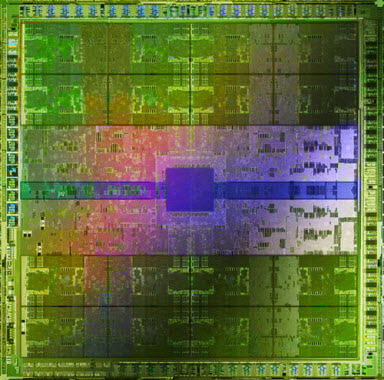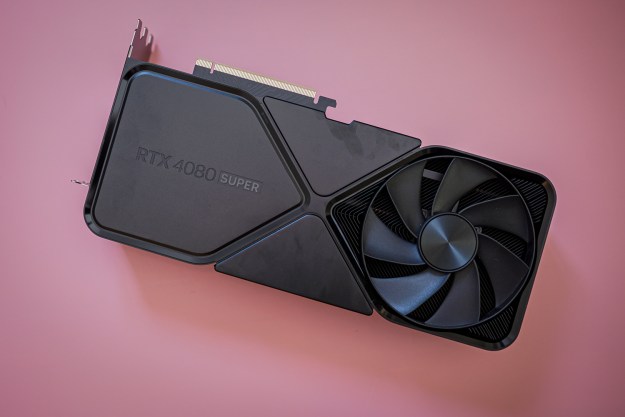 Nvidia has been under a lot of competitive pressure over the last year, but especially during the last four months as its primary competitor ATI has launched six desktop DirectX 11 GPUs and a complete Mobility Radeon lineup for notebooks. Over two million DX11 GPUs have been sold so far, all of them from ATI. Nvidia had a fairly large presence at the 2010 International Consumer Electronics Show in Las Vegas, but also had a series of briefings for select members of the press the week after CES. The embargo date is today, and some of the details that were discussed can be revealed.
Nvidia has been under a lot of competitive pressure over the last year, but especially during the last four months as its primary competitor ATI has launched six desktop DirectX 11 GPUs and a complete Mobility Radeon lineup for notebooks. Over two million DX11 GPUs have been sold so far, all of them from ATI. Nvidia had a fairly large presence at the 2010 International Consumer Electronics Show in Las Vegas, but also had a series of briefings for select members of the press the week after CES. The embargo date is today, and some of the details that were discussed can be revealed.
There are three things that most enthusiasts have expected from Nvidia‘s next-generation gaming GPU based on the Fermi architecture. There was no doubt that it would sport a large die size, run hot, and be expensive. The big question was whether it would be more powerful than anything the graphics division of AMD could muster. Nvidia has been promising everybody since its GPU Technology conference in October that it would “blow ATI away”, but we’re been waiting on the hardware while ATI’s GPUs dominated the holiday shopping season.
Nvidia is saying that GF100 chips are in production, but we don’t have details on yields or how many wafers are being produced at the Taiwan Semiconductor Manufacturing Company (TSMC). GF100 chips are being produced on the 40nm process, and ATI has had a hard time with the process since it first began the transition in March of last year. The GF100 has over 3 billion transistors, 50% more than the Cypress GPU which is fairly large at 334mm^2. Initial reports are that the GF100 will exceed 500mm^2, which means that there will be a lot of chips that won’t be able to run at full capabilities. We can probably expect defective chips to be used in cut-down GF100 variants.
The first boards will be launched at the end of February, with first availability in March. However, volumes will be a problem, and we have been hearing concerns from some board partners that there won’t be enough chips to meet demand until April, at best. The initial flagship card will launch with 512 stream processor cores (which NVIDIA is calling CUDA cores), 48 ROPs and a 384-bit bus running GDDR5.
There are sixteen Shader Multiprocessing core (SM cores) consisting of 32 Cuda cores each. Each SM core also has 16/48KB of dedicated L1 cache, four texture units, and a PolyMorph Engine. The PolyMorph Engine handles geometry on the GPU and is responsible for Vertex Fetch, Tessellation, Viewport Transform, Attribute Setup, and Stream Output functions.
One of the biggest features of DX11 is hardware tessellation, and Nvidia is looking to beat ATI at their own game. Tessellation is one of the few features that are very visible on screen while gaming, and can have a very large visual impact.
Nvidia has been talking about 3D gaming for a couple of years, even if no one wants to make the hardware. The company was showing off their “3D Vision Surround” concept at CES as being a marked improvement over ATI’s Eyefinity multiple display technology. However, while ATI’s Radeon HD 5000 series cards all come with support for three monitors on a single card, Nvidia‘s version is only capable of supporting two displays on a single card. More graphics cards must be added in order to support three or more monitors.
There is one question that no one seems to be asking NVIDIA. Where are the next generation mainstream DirectX 11 graphics cards? Over 90% of graphics cards sold are priced at less than $200, and NVIDIA will have to come up with something soon if they want to stop losing mainstream market share.
Editors' Recommendations
- Nvidia RTX 50-series graphics cards: news, release date, price, and more
- How to update or uninstall a Game Ready driver
- Nvidia turns simple text prompts into game-ready 3D models
- GPUs just broke a 25-year-old record
- Why I’m feeling hopeful about Nvidia’s RTX 50-series GPUs



